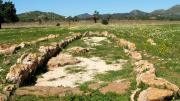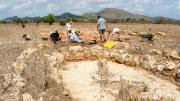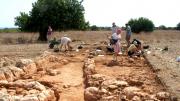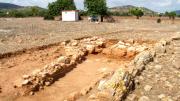Calas de Mallorca:
NAVETAS OF
S'HOSPITALET VELL
Right next to the talaiot of Hospitalet Vell, the remains of three naveti-shaped dwellings from the Pre-Talaiotic period have been uncovered so far. They are interesting not only because of their size, but also because of the findings made here. As in many other places, the stones of the navetas were used to build other houses after the end of the pre-talaiotic culture.S'HOSPITALET VELL
The fact that Navetas and Talaiots are as close to each other as they are here is astonishing. While people in pre-Talaiotic times mostly settled in plains and valleys, in Talaiotic times they preferred more strategically favourable places, such as hilltops, from which the surrounding country could be easily surveyed.
Unfortunately, an exact date for the establishment of this settlement could not be determined so far, but among the finds made here, some barrels stand out in particular, which can be assigned to the period between the end of the Middle Bronze Age and the beginning of the Late Bronze Age, about 2,000 to 1,500 BC. Also of interest is an oval fireplace that was underlaid with a flat stone tile about one metre long. At one end of this tile was a box formed by three flat stones, in which the fire was, while the other end served as a kind of work table.
The second naveta may have been a metal foundry. Among other objects, the mould for a triangular dagger was found here.









